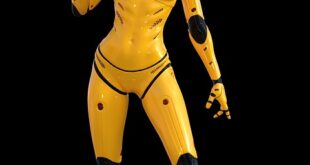How machines learned to think like humans
Asimov’s “I, Robot” might have predicted a world where robots behaved like humans, but it was the father of AI, Alan Turing, who laid the foundation for artificial intelligence back in the 1950s. It was his Turing Test, designed to see whether machines could imitate conversational behavior enough to be indistinguishable from humans, that began our epochal journey towards machine learning as we see it now.
Early days of Machine Learning
The early days of developing machines to simulate human intelligence was racked with controversy and failed experiments.
Despite abundant research and evolution, it wasn’t until the early 2000s that machine learning would make significant progress toward achieving human-like comportment.
The dawn of Machine Learning
Scientists started right from scratch as they developed machine learning. In this initial breakthrough, faster and less expensive hardware allowed machines to work faster; the invention of the algorithm, which helped computers to recognize patterns even when the input had a variety of variables over various features; and the increase of internet data, which retained more content than anyone knew what to do with allowed greater system modeling.
Machine Learning Today
Machine learning models are now so sleek that they have adapted sufficiently to drive measurable and valuable results. One embodiment of this has been seen in the use of even the simplest recommendation engines.
Sophisticated machine learning algorithms, clustering programs that recognize faces, language generation programs that spam text, natural language processing tools that discern names and keywords – all have built a context towards a machine intelligence paradigm that is called ‘deep learning.
Conclusion
From exploratory ideas coming forth from back then when computing was not even improving faster, artificial intelligence has progressed in tiny steps to major development over the years. Machine Learning’s usefulness in broad fields also keeps us motivated to move even further into the AI era. But, it is incredible how a simple interest of trying to create machines that can simulate human intelligence could have evolved into achieving remarkable and interesting results.
 Mind Uncharted Explore. Discover. Learn.
Mind Uncharted Explore. Discover. Learn.



